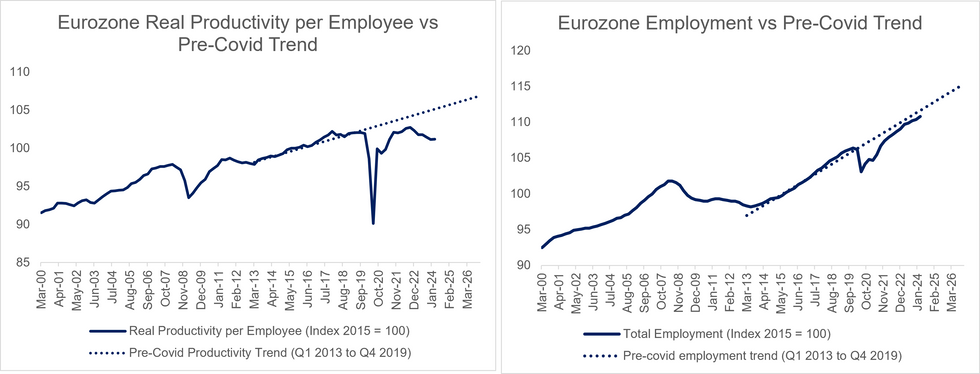-
Policy
Policy
Exclusive interviews with leading policymakers that convey the true policy message that impacts markets.
LATEST FROM POLICY: -
EM Policy
EM Policy
Exclusive interviews with leading policymakers that convey the true policy message that impacts markets.
LATEST FROM EM POLICY: -
G10 Markets
G10 Markets
Real-time insight on key fixed income and fx markets.
Launch MNI PodcastsFixed IncomeFI Markets AnalysisCentral Bank PreviewsFI PiFixed Income Technical AnalysisUS$ Credit Supply PipelineGilt Week AheadGlobal IssuanceEurozoneUKUSDeep DiveGlobal Issuance CalendarsEZ/UK Bond Auction CalendarEZ/UK T-bill Auction CalendarUS Treasury Auction CalendarPolitical RiskMNI Political Risk AnalysisMNI Political Risk - US Daily BriefMNI Political Risk - The week AheadElection Previews -
Emerging Markets
Emerging Markets
Real-time insight of emerging markets in CEMEA, Asia and LatAm region
-
Commodities
-
Credit
Credit
Real time insight of credit markets
-
Data
-
Global Macro
Global Macro
Actionable insight on monetary policy, balance sheet and inflation with focus on global issuance. Analysis on key political risk impacting the global markets.
Global MacroDM Central Bank PreviewsDM Central Bank ReviewsEM Central Bank PreviewsEM Central Bank ReviewsBalance Sheet AnalysisData AnalysisEurozone DataUK DataUS DataAPAC DataInflation InsightEmployment InsightGlobal IssuanceEurozoneUKUSDeep DiveGlobal Issuance Calendars EZ/UK Bond Auction Calendar EZ/UK T-bill Auction Calendar US Treasury Auction Calendar Global Macro Weekly -
About Us
To read the full story
Sign up now for free trial access to this content.
Please enter your details below.
Why MNI
MNI is the leading provider
of intelligence and analysis on the Global Fixed Income, Foreign Exchange and Energy markets. We use an innovative combination of real-time analysis, deep fundamental research and journalism to provide unique and actionable insights for traders and investors. Our "All signal, no noise" approach drives an intelligence service that is succinct and timely, which is highly regarded by our time constrained client base.Our Head Office is in London with offices in Chicago, Washington and Beijing, as well as an on the ground presence in other major financial centres across the world.
Real-time Actionable Insight
Get the latest on Central Bank Policy and FX & FI Markets to help inform both your strategic and tactical decision-making.
Free AccessQ1 Real Productivity Per Employee Prints Below ECB March Forecast
The preliminary estimate of Eurozone Q1 employment indicated growth of 0.3% Q/Q and 1.0% Y/Y. This leaves the employment index tracking a touch below the pre-covid trend. However, real productivity per employee was estimated at 0.0% Q/Q and -0.6% Y/Y. In its March projections, the ECB forecasted this metric at -0.4% Y/Y.
- All else equal, the weak productivity development increases the risk of inflation stickiness, particularly within core services components (where wages form a large proportion of total costs).
- Real productivity per employee remains well below the pre-covid trend. Yesterday, the ECB’s Knot noted the importance of the Eurozone’s weak productivity growth in pushing up unit labour costs post-covid.
- Knot, speaking on a panel alongside Fed Chair Powell, said that the Eurozone’s policies to protect jobs during the covid crisis hampered the productivity-enhancing labour market reallocation that was seen in the US.
- The preliminary GDP release does not contain information on hours worked, or the GDP deflator and its components. The ECB’s central scenario is that still-strong unit labour cost growth will be absorbed by a moderation in unit profits, enabling GDP deflator growth to soften. This is a dynamic already seen in Spain, where the relevant data for Q1 is available.
- As such, today’s data won’t stand in the way of the likely June cut, but will need to be taken alongside the final Q1 GDP release (on June 7) to determine any relevant signals for the path of rates beyond that meeting.

To read the full story
Sign up now for free trial access to this content.
Please enter your details below.
Why MNI
MNI is the leading provider
of intelligence and analysis on the Global Fixed Income, Foreign Exchange and Energy markets. We use an innovative combination of real-time analysis, deep fundamental research and journalism to provide unique and actionable insights for traders and investors. Our "All signal, no noise" approach drives an intelligence service that is succinct and timely, which is highly regarded by our time constrained client base.Our Head Office is in London with offices in Chicago, Washington and Beijing, as well as an on the ground presence in other major financial centres across the world.
